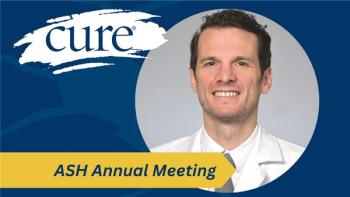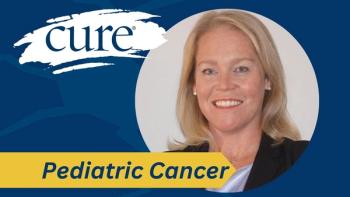
- Spring 2009
- Volume 8
- Issue 1
Web Exclusive: Childhood Survivors Face Increased Risks
The risk of secondary cancers in childhood cancer survivors and what survivors can do to protect themselves.
Michael Kimbarow was 13 years old when he was diagnosed with Hodgkin disease in 1966, long enough ago that his incomplete medical records don’t indicate which kind. But Kimbarow, now 56, knows he received partial mantle field radiation therapy that included the neck and chest areas, he says. He grew up in good health, but in 2005, the left side of Kimbarow’s face became paralyzed.
“Obviously something was terribly wrong,” he says.
An MRI scan and a biopsy discovered a malignant tumor in a cranial nerve on the left side of his brain and in the soft tissue in the left mastoid area of the upper neck, Kimbarow says.
After surgery to remove the tumor and six weeks of targeted radiation, Kimbarow learned that the radiation treatment he received in the mid ’60s may have caused the tumor.
While some chemotherapy agents can be linked to a new diagnosis of leukemia in childhood cancer patients after four to 10 years, radiation-related secondary cancers are more common and generally occur 15 to 25 years after the first cancer, says Kevin C. Oeffinger, MD, director of the Memorial Sloan-Kettering Cancer Center’s Program for Adult Survivors of Pediatric Cancer.
Just as with adult secondary cancers, however; only a small fraction of childhood cancer patients develop a secondary cancer, says Debra L. Friedman, MD, associate professor of pediatrics at Vanderbilt-Ingram Cancer Center in Nashville.
“The real puzzling piece is that we treat thousands and thousands of patients the same way and only a small percentage of patients go on to have subsequent malignancies,” she says.
The number of childhood cancer patients who will get a secondary cancer is low, but growing as the population ages, Friedman says. In a 2007 study based on the Second Childhood Cancer Survivor Study, published in the Journal of the National Cancer Institute, Friedman and her colleagues wrote that the cumulative increase in a sarcoma cancer diagnosis was nine-fold over the general population 11 years after the original cancer treatment.
“In the general population, cancer is more common in older patients than younger,” she says. “Incidence will continue to rise as the patient population moves twenty-plus years and out from their childhood cancer diagnosis. Data, so far, suggest that their risk will continue to be higher than that of the general population, even at older ages.”
The most common secondary cancers for childhood survivors are basal cell carcinomas, a common type of skin cancer, as well as cancers of the thyroid and breast, Oeffinger says.
These long-term studies have caused major changes in how radiation and chemotherapy are administered to prevent secondary cancers in children, Friedman says.
“That’s part of the reason we need to look at data,” she says. “Because of what we’ve learned, the amount and fields of radiation therapy has markedly reduced, and chemotherapy agents known to cause secondary cancers are used very sparingly now in adults and pediatric patients.”
Friedman recommends that childhood cancer survivors use childhood cancer clinics for annual physicals and regular testing, if possible. Childhood cancer clinics can be found through
Kimbarow says his health has been good since the latest treatment, and he is not regretful about his original cancer treatment.
“I got nearly a 40-year run on my first treatment,” he says. “I’m hoping for another 40 years.”
Childhood cancer survivors can learn more about their cancer and the follow-up guidelines written by the Children's Oncology Group at
Articles in this issue
about 16 years ago
The Final Journey: The Life and Death of Judy Abernathyover 16 years ago
Web Exclusive: What Is a "Good Death?"over 16 years ago
Web Exclusive: Resolving Your Own Deathover 16 years ago
Web Exclusive: Understanding Hospicealmost 17 years ago
Web Exclusive: Find a Clinical Trial That's Right for Youalmost 17 years ago
Web Exclusive: Find a Clinical Trial That's Right for Youalmost 17 years ago
Web Exclusive: Eulogy for Dr. Phillip Bermanalmost 17 years ago
Web Exclusive: A Granddaughter's Eulogyalmost 17 years ago
Calming Cancer Painalmost 17 years ago
Excerpt: When Hormone Therapy Can Stress You Out



